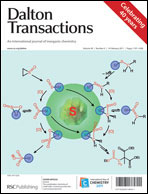Copper(ii) complexes of hybrid hydroxyquinoline-thiosemicarbazone ligands: GSK3β inhibition due to intracellular delivery of copper†
Abstract
Cognitive decline associated with Alzheimer's disease appears to be related to the hyper-phosphorylation of the


 Please wait while we load your content...
Please wait while we load your content...